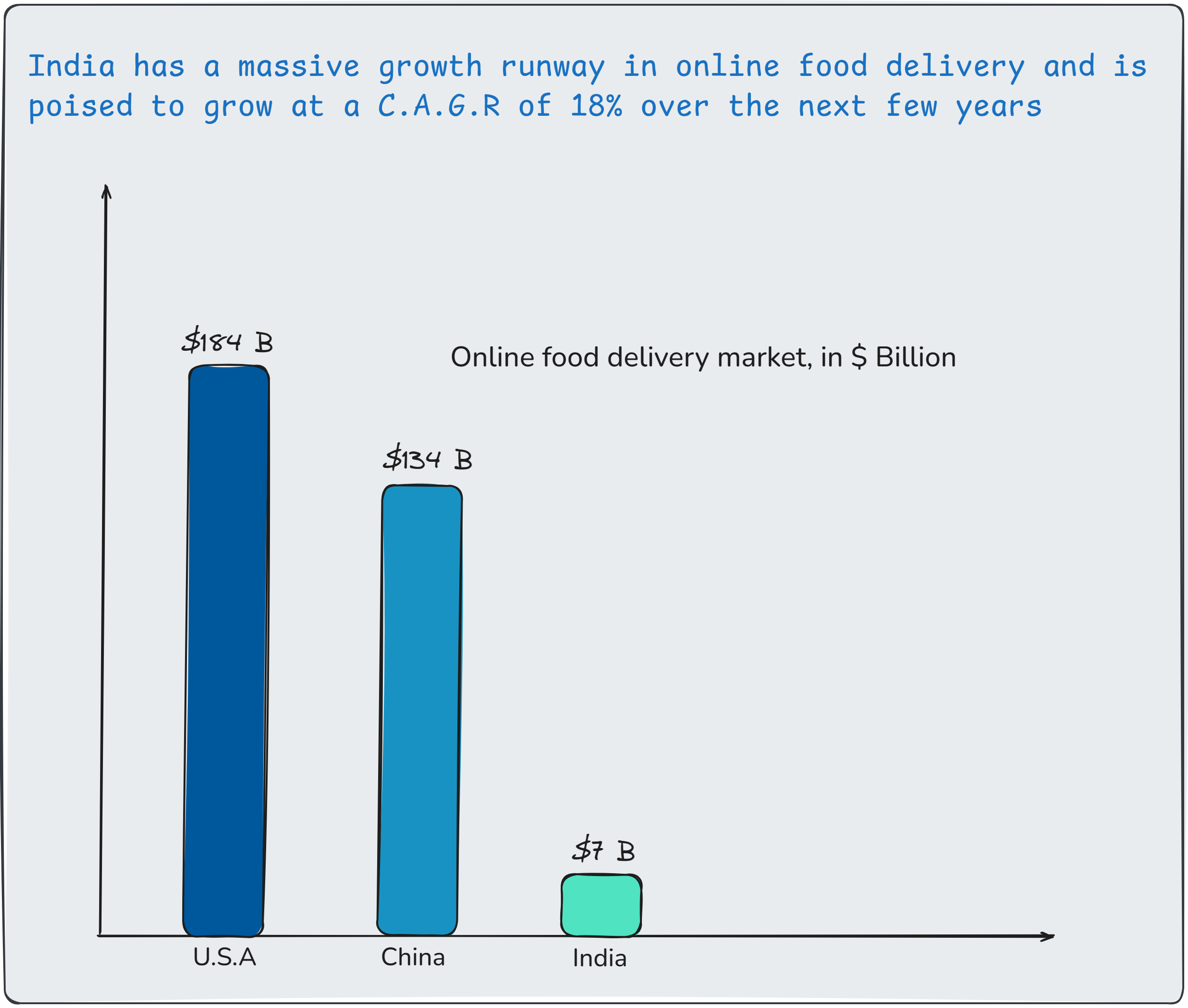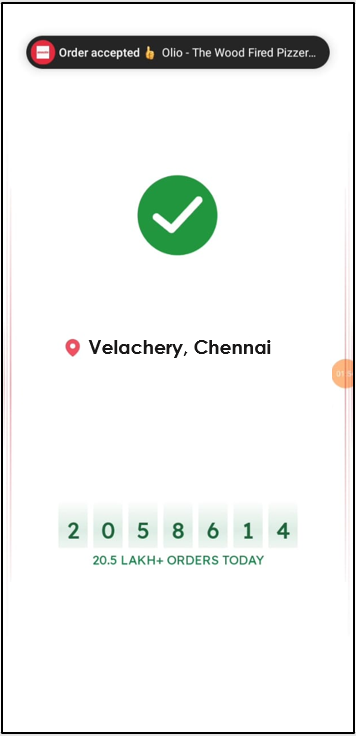Zomato:Removing the guilt from ordering Takeout
Dec 31, 2024Online food delivery business is rapidly growing in India. The average Indian consumer today orders food 4.2 times a month.
Online food delivery market is expected to grow at around 18% CAGR, with the addressable customer base expected to grow from the current $320–$340 million to $430–$450 million by 2030.
However, there is still a massive headroom for growth available in India compared to mature markets like U.S. and China. The U.S. market is at $134 billion in 2023 and China at $184 billion. India’s online delivery market, is much smaller at $7 billion.

As expected, over 40% of the customers using this service are millennials and Gen Z. This number is only expected to grow further.
To achieve further growth, the online food providers should overcome a few quirks unique to the Indian subcontinent. There is an interesting user problem that these Online food delivery businesses face.
User Pain Point
While users enjoy the convenience of food delivery apps, but their experience is often accompanied by a lingering sense of guilt. Restaurant food is generally considered unhealthy and an unnecessary expense.
Solution
Zomato has come up with an interesting solution to this user problem.
Once an order is placed, an ‘All-India Live order count’ is shown to the user.

This solves the pain point of the user by alleviating the guilt associated with ordering out.
Rationale
When users see that thousands or even lakhs of others are ordering food, it normalizes the behavior. It creates the perception that “everyone is doing it,” and lead users to rationalize their decision with thoughts like, “If so many others are doing it, it can’t be that bad.”
Humans are naturally influenced by social proof. Knowing that many others are making the same decision can make users feel that their choice is acceptable, even if it’s indulgent or perceived as unhealthy.